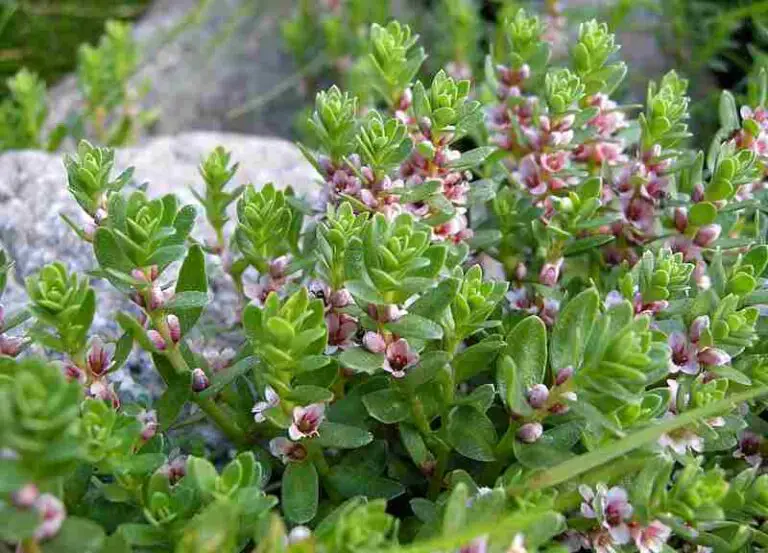11 Desertification Effects Fully Explained
Desertification effects are food insecurity, habitat destruction, biodiversity loss, disease outbreak, resource depletion, erosion, natural hazards, global warming, poverty and conflict.
These are discussed individually in this article as follows;
1). Food Insecurity as one of the Desertification Effects
Desertification can contribute significantly to food insecurity.
This is simply because desertification affects agriculture in a negative manner. With desertification, soil properties such as moisture content, structure and nutrient composition, are all altered. This usually results in loss (or decline) of soil fertility [4].
Crop yields naturally decrease with a decline in soil fertility. As the characteristics of the soil change in favor of arid characteristics and conditions, the ability of the soil to support plant growth declines, as well as crop yield.
Often, unsustainable agricultural practices may themselves be causes of desertification. Examples of such practices include overgrazing and improper irrigation [3].
In the absence of sustainable practices like soil conservation, severe desertification and a total loss of agricultural production capability could occur.

Consequences of desertification on crop yield, agriculture and food security can be observed in the Northern parts of Africa like Tunisia, where over 50% of potential agricultural lands is threatened by desertification [1].
2). Habitat Destruction
The changes that accompany desertification, usually affect the biological components of the environment significantly [8].
As a result, it is not uncommon for the vital biotic (and abiotic) components of an ecosystem to be altered, or completely destroyed due to desertification.
These effects may be observed in the form of a shift in favor of desert ecosystem characteristics. Physicochemical and biological attributes of the environment become unfavorable to support the survival of resident species, implying that habitat-destruction has occurred.
Ways in which this may be observed include the transformation of biomes and the progressive change from one habitat type to another; such as from tropical forest to savannah, and then to desert as the case may be.
3). Biodiversity-loss as one of the Desertification Effects
Loss of biodiversity is one of the most typical and common consequences of desertification.
As mentioned in the foregoing explanation, desertification leads to changes and the establishment of new physicochemical and biological conditions. These events imply that many species inhabiting the ecosystem or region where desertification has occurred, will no longer be able to survive.
There are two main mechanisms by which biodiversity could be lost as a result of desertification.
On one hand, species may be forced to migrate in large numbers, from the affected area to other regions that better support their survival. Organisms particularly favored by this option include birds and species whose suitable destination is within relatively-close proximity.
On the other hand, inability to adjust to the changing conditions and effects of desertification may result in the death or extinction of species [2]. In either case, biodiversity is eventually lost.
Some rare cases of biodiversity-loss may result from other related events which are consequences of desertification; like the rise in occurrence of natural hazards.
Arid areas are known to have lower biodiversity than other regions, due to the relative-difficulty of survival [9].

4). Rise in Spread and Incidence of Diseases
The incidence and spread of diseases is another example of the potential consequences of desertification.
There are various reasons for which this is the case. An obvious reason is the fact that desertification (especially on a large and wide scale) increases the risk of hunger [14]. With exposure to hunger, the population becomes more vulnerable to malnutrition and low immunity, both of which increase the risk of diseases.
Alternatively, desertification, being a form of environmental degradation, could cause a decline in air quality within a given region. Air pollution in the form of high atmospheric concentrations of suspended solid particles (dust) increases the risk of respiratory diseases [12].
Migration of people as a result of desertification is another way by which diseases may spread.
Lastly, when desertification occurs, habitats may be destroyed, forcing various organisms to migrate from their natural habitat toward human settlements. This can increase the risk of outbreak of zoonotic diseases within the human population [10].
5). Resource Depletion as one of the Desertification Effects
Desertification can lead to the depletion of natural resources, either through actual loss or degradation.
One of the effects of desertification is a change in environmental conditions.
In most cases, these changes include a rise in average temperatures and a decline in precipitation and humidity [11]. Conditions such as these can lead to the loss of important resources like water, soil, and nutrients.
Alternatively, desertification can degrade various aspects of the environment.
The risk of water pollution increases with desertification, as soils no longer possess their vegetative cover or optimal permeability that help to filter water which percolates through the soil into aquifers. This means that groundwater in areas affected by desertification are at greater risk of drying up or degrading.
Similarly, air quality, and biological productivity (which is a reflection of the presence of nutrients) can be lost due to desertification.
6). Flooding and Erosion as Desertification Effects
Flooding and erosion are both causes and effects of desertification.
When desertification occurs, the structural integrity of soil is compromised [7]. At the same time, soil loses its vegetative cover, thereby becoming more susceptible to physical displacement by wind or water.
In regions where weather conditions are unstable; erratic (irregular) rainfall patterns may lead to periodic flooding and erosion. These effects could also further the progress and increase the intensity of desertification.
7). Forced Migration as one of the Desertification Effects
Because desertification leads to significant environmental changes and loss of soil biological productivity, one of its consequences is forced migration.
Forced migration is most likely in cases where the degree of desertification is severe. In such cases, the population is subjected to abrupt, drastic environmental changes and harsh conditions.
The role of desertification as a cause of forced migration is notable in developing regions such as parts of West Africa [5], where subsistence agriculture is a common practice.
Exposure of the population to other consequences of desertification like food insecurity, disease outbreak, erosion and flooding, may be influential in forced migration, as efforts are made to relocate to better environments.
8). Social Conflict
Because desertification causes resource-depletion, food insecurity, disease outbreak and forced migration, it increases the risk of conflict.
Such an outcome is especially likely where multiple consequences of desertification have taken effect on the human population. For example, when resources are depleted as a result of desertification, the likelihood of conflict over the allocation of the remaining resources may increase.
Social conflict as a consequence of desertification may be observed in the western, eastern and sub-Saharan regions of Africa such as Senegal and Sudan [13], as well as in parts of Asia such as Syria [15].
9). Economic Recession as one of the Desertification Effects
Desertification is a potential cause of economic recession and poverty [3].
This is because it degrades the overall quality of the environment and reduces its productivity. The role of desertification as a cause of economic recession is particularly significant in rural and developing regions where there is direct dependence on the natural environment for economic growth.
10). Global Warming
Global warming is a cause and effect of desertification.
As one of the consequences of desertification, global warming basically results from the loss of vegetative cover. Because vegetation acts as a natural carbon sink [6], the loss of such vegetation leads to an increase is atmospheric carbon produced through processes like biodegradation and fossil fuel combustion.
On a long-term scale, desertification can lead to climate change, as a cumulative result of environmental changes over a period of time.
11). Increase in Disaster Risk as one of the Desertification Effects
Disaster-risk may increase as an effect of desertification.
This is because desertification makes the environment more vulnerable to disruption by natural and manmade factors.
Examples of natural hazards which are related to desertification include flooding, erosion, and drought. Both desertification and natural disaster are push factors; meaning that they can lead to forced migration.
Conclusion
Consequences of deforestation are;
- Food Insecurity
- Habitat Destruction
- Biodiversity-loss
- Rise in Spread and Incidence of Diseases
- Resource Depletion
- Flooding and Erosion
- Forced Migration
- Social Conflict
- Economic Recession
- Global Warming
- Increase in Disaster Risk
References
1). Aloui, H. (2008). “Regional challenges in Africa: The Case of Tunisia”. Available at: https://www.un.org/esa/sustdev/sdissues/desertification/beijing2008/presentations/aloui.pdf. (Accessed 24 June 2022).
2). Daza, Y. C. C.; Laguna, M. F.; Monieau, A.; Abramson, G. (2019). “Waves of desertification in a competitive ecosystem.” Available at: https://www.researchgate.net/publication/330775538_Waves_of_desertification_in_a_competitive_ecosystem. (Accessed 25 June 2022).
3). Ghrefat, H. A. (2011). “Causes, impacts, extent, and control of desertification.” Available at: https://www.researchgate.net/publication/287849029_Causes_impacts_extent_and_control_of_desertification. (Accessed 24 June 2022).
4). Gupta, G. S. (2019). “Land Degradation and Challenges of Food Security.” Review of European Studies 11(1):63. Available at: https://doi.org/10.5539/res.v11n1p63. (Accessed 24 June 2022).
5). Hammer, T. (2004). “Desertification and Migration: A Political Ecology of Environmental Migration in West Africa.” Environmental Change and its Implications for Population Migration (pp.231-246). Available at: https://doi.org/10.1007/978-1-4020-2877-9_11. (Accessed 24 June 2022).
6). Keenan, T. F.; Williams, C. (2018). “The Terrestrial Carbon Sink.” Annual Review of Environment and Resources 43(1). Available at: https://doi.org/10.1146/annurev-environ-102017-030204. (Accessed 25 June 2022).
7). Ma, L.; Wang, Q.; Shen, S.; Li, E.; Li, L. (2020). “Heterogeneity of soil structure and fertility during desertification of alpine grassland in northwest Sichuan.” Ecosphere 11(7). Available at: https://doi.org/10.1002/ecs2.3161. (Accessed 25 June 2022).
8). Maestre. F. T.; Reynolds, J. F.; Huber-Sannwald, E.; Herrick, J. E.; Smith, M. S. (2006). “Understanding global desertification: Biophysical and socioeconomic dimensions of hydrology.” Dryland Ecohydrology (pp.315-332). Available at: https://doi.org/10.1007/1-4020-4260-4_18. (Accessed 25 June 2022).
9). Mcneely, J. (2003). “Biodiversity in arid regions: Values and perceptions.” Journal of Arid Environments 54(1):61-70. Available at: https://doi.org/10.1006/jare.2001.0890. (Accessed 25 June 2022).
10). Mishra, J.; Mishra, P.; Arora, N. (2021). “Linkages between environmental issues and zoonotic diseases: with reference to COVID-19 pandemic.” Environmental Sustainability 4(1). Available at: https://doi.org/10.1007/s42398-021-00165-x. (Accessed 25 June 2022).
11). Olagunju, T. E. (2015). “Drought, desertification and the Nigerian environment: A review.” Journal of Ecology and the Natural Environment 7(7):196-209. Available at: https://doi.org/10.5897/JENE2015.0523. (Accessed 25 June 2022).
12). Pinkerton, K. E.; Rom, W. N. (2014). “Global Climate Change and Public Health.” Available at: https://doi.org/10.1007/978-1-4614-8417-2. (Accessed 25 June 2022).
13). Scheffran, J.; Link, P. M.; Schilling, J. (2019). “Climate and Conflict in Africa.” Oxford Research Encyclopedia of Climate Science. Available at: https://doi.org/10.1093/acrefore/9780190228620.013.557. (Accessed 25 June 2022).
14). Stringer, L. C.; Akhtar-Schuster, M.; Marques, M. J.; Amiraslani, F.; Quatrini, S.; Abraham, E. M. (2011). “Combating Land Degradation and Desertification and Enhancing Food Security: Towards Integrated Solutions.” Annals of Arid Zone 50(3-4):1-23. Available at: https://www.researchgate.net/publication/259459408_Combating_Land_Degradation_and_Desertification_and_Enhancing_Food_Security_Towards_Integrated_Solutions. (Accessed 25 June 2022).
15). Voski, A. (2016). “The Role of Climate Change in Armed Conflicts across the Developing World and in the Ongoing Syrian War.” Carleton Review of International Affairs 3. Available at: https://doi.org/10.22215/cria.v3i0.123. (Accessed 25 June 2022).



